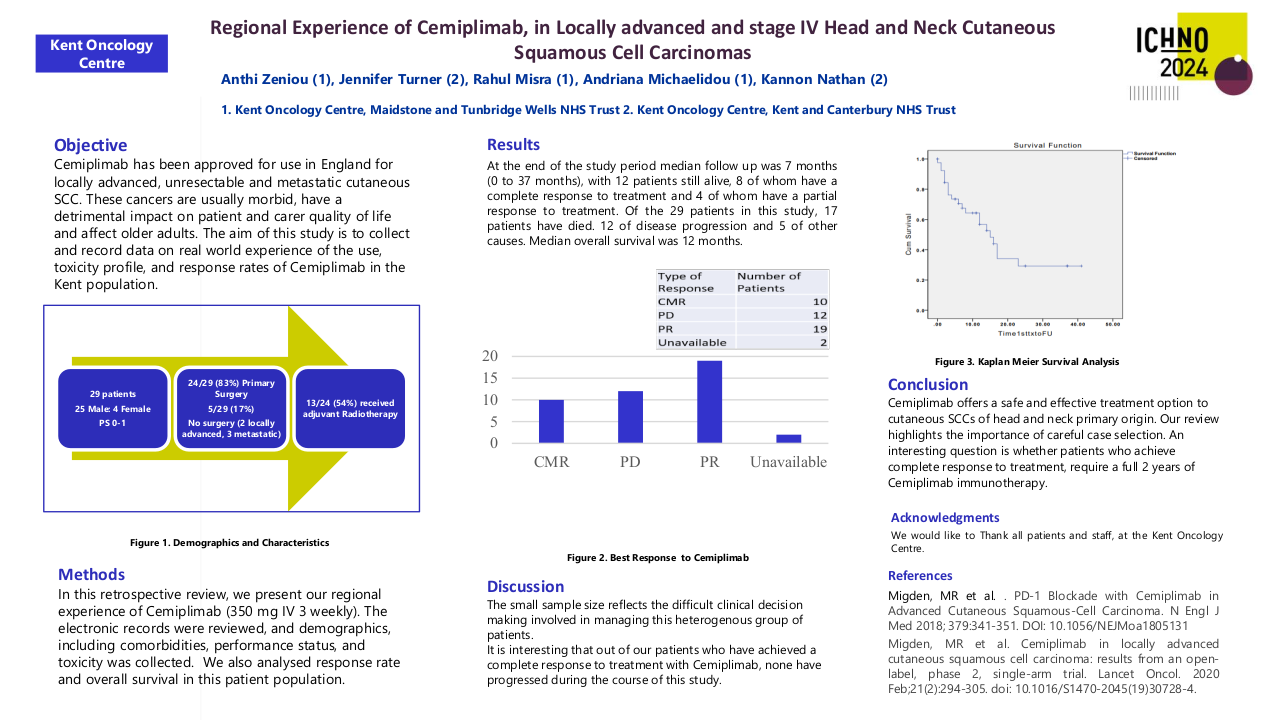treatment tolerance and toxicity in elderly nasopharyngeal cancer patients and implication on outcomes
Purpose/Objective
Nasopharyngeal cancer is common in Morocco. It is a clinicobiological and histological entity that differs from other head and neck cancers, notably in its geographical distribution and evolutionary profile.
The aim of our work was to evaluate the impact of treatment tolerance and toxicity in nasopharyngeal cancer in elderly (age at diagnosis ≥ 60 years).
Material/Methods
This was a retrospective study of patients with nasopharyngeal cancer treated by VMAT technique in the radiotherapy department at the Institute of Oncology RABAT between January 2018 and December 2021.
Patients received radiotherapy with or without concomitant systemic therapy.
Results
We identified 257 patients: 21% elderly and 79% young, with no differences in AJCC stage 8th edition,
Tumors were classified as T1 in 11 %, T2 in 33%, T3 in 24 %, and T4 in 32 %.
Median age in elderly group was 66 years, Sex repartition: 79% men and 21% women. Comorbidities were observed in 14% cases.
The predominant histological type was undifferentiated nasopharyngeal carcinoma (UCNT) in 87% of cases.
Median total duration was 45 days, with 3% patient who did not complete the prescribed RT course with no differences across age groups.
31% patient received radiotherapy alone and 69% received concomitant radio-chemotherapy to a total dose of 69.96 Gy, combined with weekly Cisplatin at a dose of 40 mg/m2/week.
Patients underwent weekly clinical and tomographic monitoring. The dominant side effect was radiomucositis: 55% G1, 20% G2, 22% of patients presented G3 , and 3% were hospitalized for G4 .
In terms of evolution, locoregional control was found in 75% of patients treated, with 11% of recurrence and 4% metastatic progression. 6% of patients died of their cancer and 4% were lost to follow-up.
Conclusion
Nasopharyngeal Cancer presents a particular evolutionary profile, which partly explains the therapeutic failures despite high radiosensitivity. For the age group studied, this evolutionary profile is compounded by a high delay in consultation and a terrain already weakened by age.




